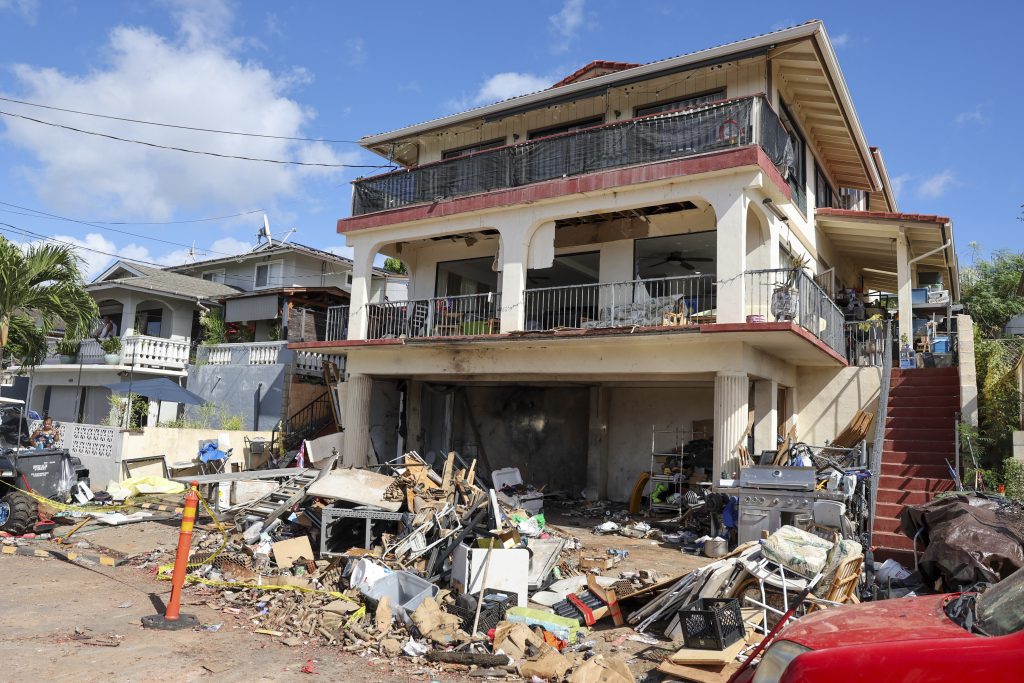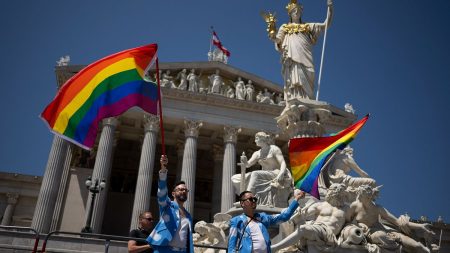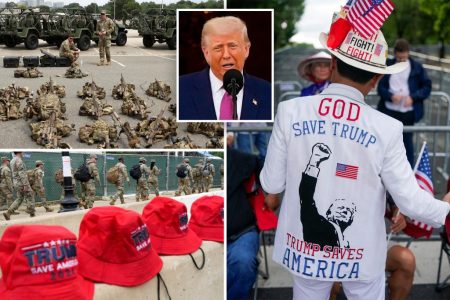The New Year’s Eve fireworks catastrophe in the Aliamanu neighborhood of Honolulu, Hawaii, has left the community reeling from the devastating aftermath. Three women lost their lives, and over 20 individuals suffered injuries, some described as akin to “war-zone” wounds by Hawaii Governor Josh Green. The incident stemmed from a seemingly innocuous celebratory act that spiraled into a tragedy of immense proportions. A bundle of lit fireworks tipped over, igniting nearby crates filled with additional explosives, resulting in a powerful blast that propelled shrapnel across the residential area. The explosion, which occurred shortly before midnight, shattered windows in neighboring homes and left debris scattered across the street, creating a scene of chaos and destruction. The gravity of the incident has prompted a thorough investigation by the Honolulu Police Department, who have classified the event as a major incident.
The tragic incident has sparked outrage and sorrow, not only among residents but also among officials. Governor Green, visibly shaken, conveyed the horrific nature of the injuries sustained by the victims, stating that they were among the worst he had ever encountered. Honolulu Emergency Services Department Director Dr. Jim Ireland echoed the sentiment, describing the scene as one of the worst calls he had attended in his 30-year career. The incident underscored the inherent dangers associated with fireworks, particularly those obtained illegally. The widespread availability of illegal fireworks has been a growing concern in Hawaii, and this tragedy has reignited the debate surrounding stricter regulations and enforcement.
The incident has also highlighted the existing legal framework governing fireworks in the United States. While laws vary from state to state, the possession and use of fireworks are generally strictly regulated. Permits are often required, and usage is typically restricted to specific holidays and timeframes. In Honolulu, for instance, the Honolulu Police Department had issued a warning just days before New Year’s Eve, reminding residents that only those with permits were authorized to set off fireworks, and only within a designated timeframe from 9 p.m. on December 31 to 1 a.m. on January 1. This incident serves as a grim reminder of the potential consequences of disregarding these regulations. The fact that the incident occurred outside of the typical 4th of July period further emphasizes the need for year-round vigilance and enforcement.
The immediate aftermath of the explosion saw emergency responders scrambling to address the numerous casualties and secure the area. The severity of the injuries stretched the resources of local hospitals, as medical professionals worked tirelessly to provide critical care to those affected by the blast. The community rallied together in support, offering assistance and comfort to the victims and their families. The scale of the incident, however, has left a palpable sense of shock and grief in the Aliamanu neighborhood and the wider Honolulu community. The tragic loss of life and the extensive injuries serve as a somber reminder of the devastating consequences of mishandling fireworks.
The investigation into the incident is ongoing, with authorities seeking to determine the exact circumstances that led to the explosion. Honolulu Police Chief Arthur Logan has stated that the determination of whether charges are warranted against the person who lit the firework is still under review. This will likely involve a thorough examination of the type of fireworks used, whether they were obtained legally, and whether proper safety precautions were taken. The investigation will also focus on identifying the source of the illegal fireworks and dismantling the network responsible for their distribution. This tragic event has prompted calls for stricter enforcement of existing regulations and a renewed push for stricter penalties for those who violate fireworks laws.
Looking ahead, Honolulu Mayor Rick Blangiardi has expressed his commitment to collaborating with federal and state agencies to combat the illegal fireworks trade. He has advocated for stronger enforcement, tougher penalties, and the implementation of new technologies to curb the influx of illegal fireworks into the community. Blangiardi’s administration is also considering public awareness campaigns to educate residents about the dangers associated with fireworks and the importance of adhering to safety regulations. This multi-pronged approach aims to prevent similar tragedies from occurring in the future. The incident serves as a stark reminder of the need for increased vigilance, stricter regulations, and community-wide efforts to address the dangers of illegal fireworks. The healing process for the community will undoubtedly be long and challenging, but the hope is that lessons learned from this tragedy will lead to meaningful changes and prevent future incidents.










